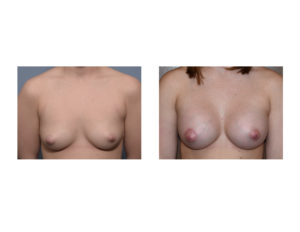Some women that undergo breast augmentation surgery have various breast asymmetries. These could be differences in the mound size, level of the inframammary fold and the size and shape of the nipple-areolar complex. Because it is the most visible part of the female breast, the size and location of the nipple on the breast mound often plays a major role in how a breast augmentation result is perceived from a symmetry standpoint.
Differences in the horizontal position of the nipple need to be recognized before surgery. As implant enlargement will almost always make a horizontal nipple asymmetry worse. If not recognized before surgery patients may perceive that it was the fault of the surgeon or the implant surgery in general. When pointed out before surgery this gives the surgeon and the patient the opportunity to review management options.

It is important to realize that a nipple and a breast mound that is significantly lower than the other side may require a different management strategy. When the horizontal nipple distance is greater than 15mm, a vertical breast lift would be more effective.
A superior nipple lift does so at the expense of small line scar at the areolar-skin margin. This scar will be red for a few months but usually fades to be inconspicous with more healing time.
Dr. Barry Eppley
Indianapolis, Indiana



